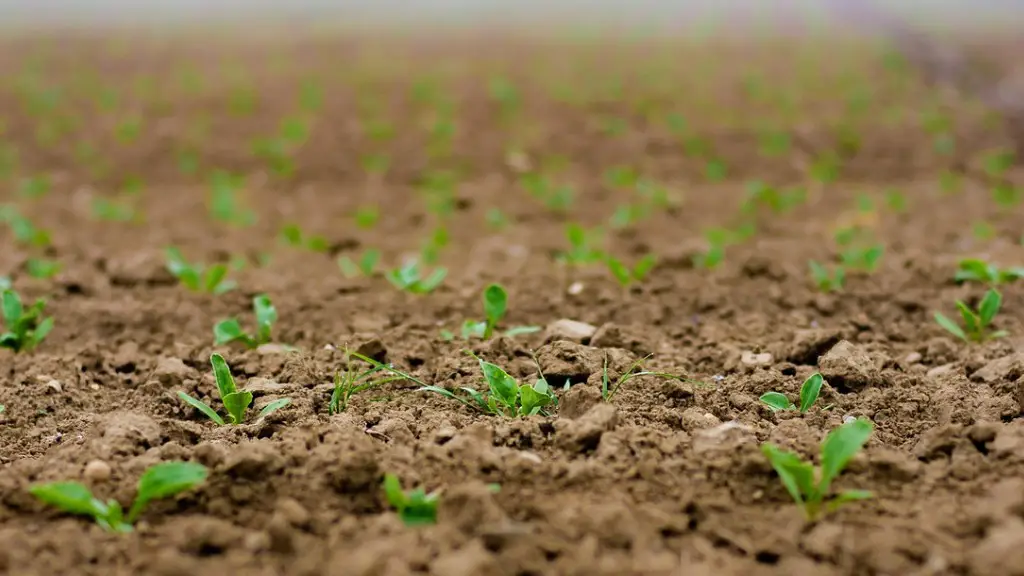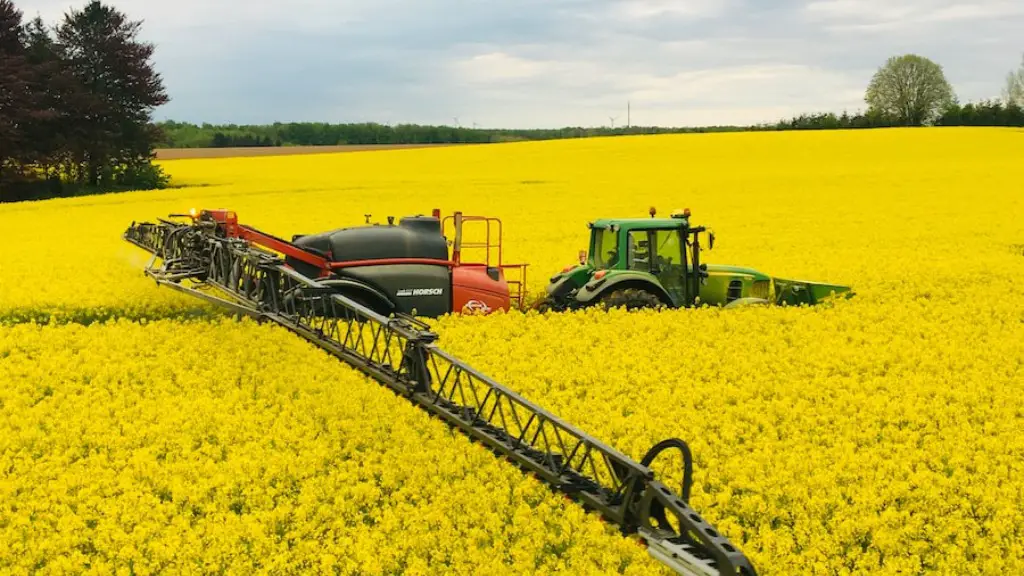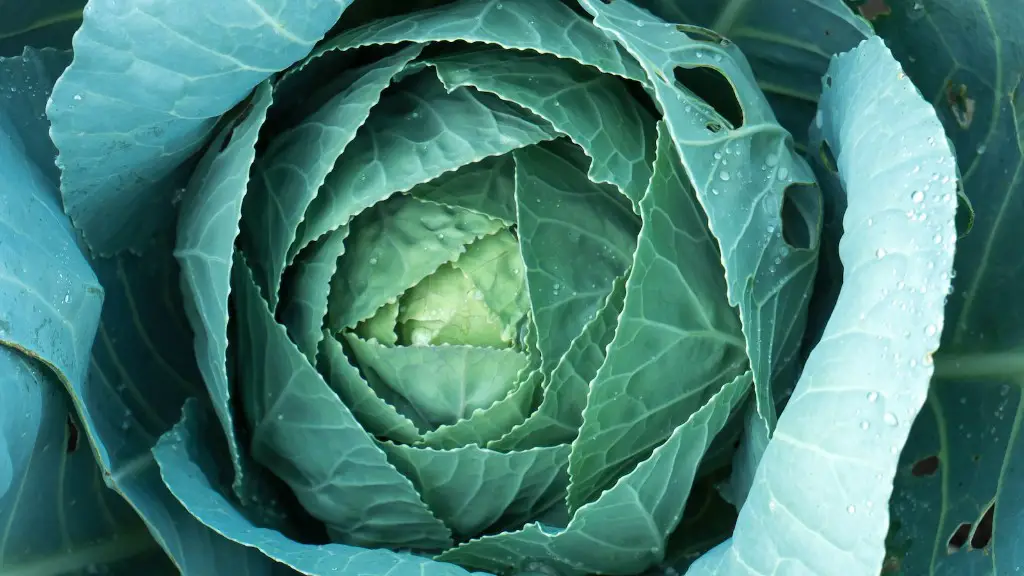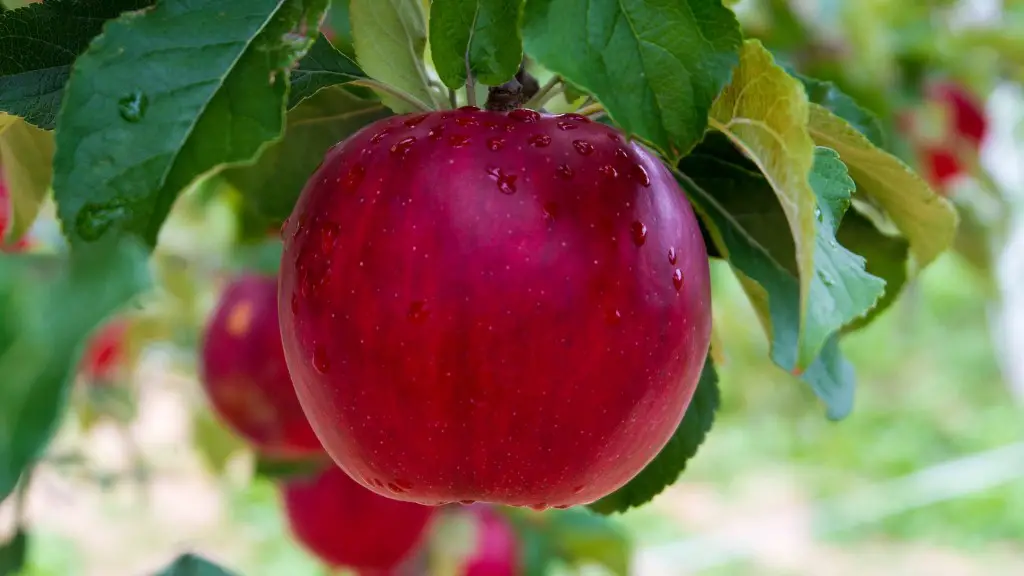Minimum tillage in agriculture has become an increasingly popular practice in the last few decades. Farming activities such as tilling and ploughing have been replaced by minimum tillage, which aims to reduce soil disturbance and retain more crop residues on the soil surface. Minimum tillage is often used as an effective way of controlling weeds, reducing soil erosion, and preserving soil structure and health. Through this technique, soil can be kept un-disturbed, resulting in greater water infiltration and increased fertility.
Benefits of Minimum Tillage in Agriculture
Minimum tillage can have many environmental and economic benefits. By eliminating the need for tilling, ploughing and discing, farmers are able to save time, resources, and money. Additionally, as there is less soil disturbance, weeds and other pests are less likely to gain a foothold. This can lead to fewer herbicides and pesticides being needed, thereby reducing potential contamination of the soil. Moreover, minimum tillage can also create beneficial changes in the microbial communities of soil, resulting in improved soil fertility.
Drawbacks of Minimum Tillage in Agriculture
Minimum tillage has its drawbacks, too. If done improperly, it can lead to increased soil compaction and reduce organic matter levels in the soil. Over time, this could create problems with respiration, leading to suboptimal growth of the crop. Also, in some cases, weeds may become more difficult to manage due to less mechanical control. Finally, there has been evidence that minimum tillage may also result in reduced yields in certain crop species.
Minimum Tillage Practices
The key to successful minimum tillage is to maintain the right balance between soil disturbance and soil residue. Different farmers may use different practices to achieve the desired balance, such as shallow ploughing, strip cropping or intercropping. Depending on the crop being grown, there may be other practices that can be used to maximize benefits, such as crop rotation, mulching or using cover crops.
Minimum Tillage Machinery
In terms of machinery, there is a wide range of minimum tillage equipment available. These include direct-seed drills, cultivation implements, harrows, rollers, tine cultivators and more. Each type of implement is designed to have a specific purpose, such as breaking up soil clods, preparing soil beds, or inter-row cultivation. Farmers should select the machinery that best suits their needs, depending on the nature of their soil, type of crop and climate.
Conditions for Minimal Tillage
Not every farmer is suited for minimum tillage. It requires certain climatic and soil conditions to be successful. For instance, the soil needs to be well-drained, and it should be low in organic matter, to reduce potential problems with weeds. Additionally, it is important to have a diverse crop rotation that includes cover crops to help reduce erosion and provide additional nutrient input. Finally, there should be a comprehensive weed management plan in place, as weeds can be a major problem if not managed properly.
Advantages of Minimum Tillage
Minimum tillage has a number of advantages over traditional tillage practices. It helps conserve soil and water resources, preserves soil structure, and reduces inputs such as time, fuel, and money. Additionally, minimum tillage allows farmers to plant crops more quickly and reduces soil compaction. In addition, it can lead to improved soil health, as fewer microbes are being disturbed and soil fertility is improved.
Disadvantages of Minimum Tillage
While minimum tillage can have numerous benefits, there are some potential drawbacks. Depending on the climate, weeds may become an issue, as there is less mechanical control. Furthermore, yields can be reduced in certain crop species, due to less mechanical tillage and a lower concentration of available nutrients. In some cases, reduced organic matter can also lead to reduced soil respiration and poorer crop growth.
Effective Strategies for Minimum Tillage
To ensure that minimum tillage is effective, farmers should develop strategies that capitalize on the benefits while minimizing the potential drawbacks. This can include selecting machinery that is suited for their soil type, properly maintaining machines, and implementing a comprehensive weed management program. Additionally, incorporating cover crops into the rotation and using mulch where appropriate can help to ensure optimal soil fertility and water catchment.
Methods to Optimize Tillage System
There are several ways that farmers can optimize their tillage system. This includes properly timing the operation of the machinery, increasing the speed of the implements, and using proper techniques for optimum residue retention. Additionally, residues can be manipulated in certain ways to maximize benefits and nutrient availability, such as using precise herbicide application or burning of crop residues. By properly utilizing these strategies, farmers can ensure their tillage system is as efficient and effective as possible.
Beneficial Practices for Minimal Tillage
Successful minimum tillage relies on the use of certain beneficial practices. This includes using precision agriculture techniques to reduce the amount of soil disturbance, using mechanical weed control measures such as strips, and using crop rotation to provide even more nutrients. Additionally, zero tillage systems can be implemented to further reduce compaction and conservation tillage systems can be used to retain crop residues and prevent erosion. By utilizing these practices, farmers can ensure their minimum tillage system is as efficient and effective as possible.
Evaluating the tillage System
When evaluating the success of minimum tillage, there are a number of factors to consider. These include soil structure, water infiltration, nutrient availability, weed control, and overall yield. Additionally, the time, labor, and cost associated with the system should be taken into account. By measuring a variety of these factors, farmers can accurately assess the success of their minimum tillage system and make any necessary adjustments.



